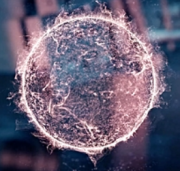日本語で読みたい方は、
google chromeで開いて、
画面上で右クリックをして
「日本語に翻訳」をクリックしてください
European Union funds CASUS research project with 700,000 euros
A promising option for creating a productive and sustainable energy source on Earth is the fusion of hydrogen nuclei. The problem? Extremely high pressures and temperatures are required to set the nuclear fusion process off. Technologically, this could be achieved using laser flashes (“laser fusion” or “inertial confinement fusion”). By drafting the “X-ray laser optimization of laser fusion” project (Röntgenlaser-Optimierung der Laserfusion, ROLF) Dr. Tobias Dornheim from the Center for Advanced Systems Understanding (CASUS) at the Helmholtz-Zentrum Dresden Rossendorf (HZDR) now intends to improve the theoretical understanding of hydrogen compression. Instead of the “trial and error” method, laser fusion experiments could be designed and carried out in a more targeted manner in the future – an essential prerequisite for a commercial fusion power plant. In addition to the EU via the “Just Transition Fund”, the Free State of Saxony also contributes directly to the funding of the project. この情報へのアクセスはメンバーに限定されています。ログインしてください。メンバー登録は下記リンクをクリックしてください。

